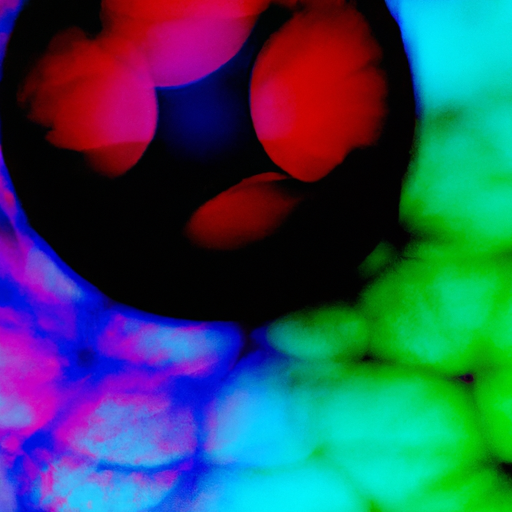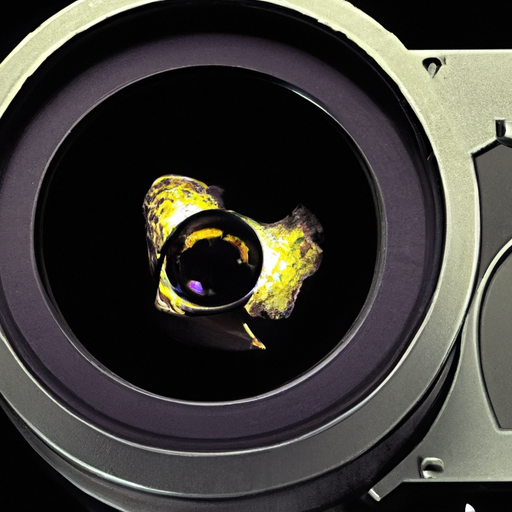Imagine being able to witness the world at a level of detail that was once only possible in science fiction. With the advent of microscopic cameras, this dream has become a reality. These tiny, high-powered devices have revolutionized the way we see and understand the world around us. In this article, we will explore the various applications and benefits of microscopic cameras, from medical research to industrial inspections, making you realize just how small things can make a big impact.
Exploring the Use of Microscopic Cameras
Introduction
Microscopic cameras, also known as micro cameras or microscopes with built-in cameras, have revolutionized various fields by providing a means to capture high-resolution images and videos of minuscule objects. These cameras are designed to capture and record images at magnifications much greater than what the human eye can perceive. In this comprehensive article, we will delve into the history of microscopic cameras, discuss the technological advancements that have propelled their use, explore their applications in medicine, science and research, industrial inspection, endoscopy, and microscopy, as well as examine the challenges and limitations they present. Additionally, we will touch upon future trends and developments in this fascinating area of camera technology.
History of Microscopic Cameras
The concept of microscopic cameras can be traced back to the early 20th century when scientists and inventors began experimenting with ways to capture images at microscopic levels. In 1942, the first electron microscope was developed, which utilized electronic imaging to capture images. This marked a significant milestone in the history of microscopic cameras as it propelled the field of microscopy forward. Over the years, advancements in technology have allowed for the miniaturization of these cameras, making them more accessible and versatile in various applications.

Technological Advancements
Technological advancements have played a pivotal role in the development and improvement of microscopic cameras. One major breakthrough was the transition from electron microscopy to digital imaging, which eliminated the use of film and allowed for real-time viewing and capturing of images. This shift not only made the cameras more user-friendly but also enabled easier sharing and analysis of the images. Moreover, the miniaturization of camera components, such as lenses and sensors, has allowed for the creation of compact and lightweight microscopic cameras that can be easily integrated into different devices and systems.
Applications in Medicine
Microscopic cameras have found numerous applications in the field of medicine, revolutionizing diagnostics and surgical procedures. One key application is in minimally invasive surgeries, where tiny cameras can be inserted into the body through small incisions to provide real-time visualization of internal organs and tissues. This allows surgeons to perform intricate procedures with precision, reducing the need for more invasive traditional methods. Additionally, microscopic cameras have been utilized in endoscopic procedures, providing detailed images of the gastrointestinal tract, respiratory system, and other internal structures, aiding in the diagnosis and treatment of various conditions.

Applications in Science and Research
In scientific research, microscopic cameras have become invaluable tools for studying and understanding the intricacies of biological and chemical systems. They allow scientists to observe and document the behavior of microscopic organisms and cells, monitor chemical reactions, and capture images of microscopic structures. These cameras have facilitated breakthroughs in fields such as genetics, molecular biology, and pharmacology, enabling scientists to visualize and analyze phenomena that were once beyond human perception. By providing detailed visual data, microscopic cameras have paved the way for new discoveries and advancements in scientific knowledge.
Applications in Industrial Inspection
Microscopic cameras have also found remarkable applications in industrial inspection, particularly in quality control and defect detection. By capturing high-resolution images of products and components, these cameras enable manufacturers to identify any defects or abnormalities that may affect product performance or reliability. This level of inspection accuracy ensures that only products meeting strict quality standards are released into the market. Additionally, microscopic cameras can be integrated into automated inspection systems, reducing manual labor and speeding up the inspection process.
Applications in Endoscopy
The field of endoscopy has greatly benefited from the use of microscopic cameras. Endoscopes equipped with cameras can now be inserted into the body through natural openings or tiny incisions, providing visual access to internal organs and structures. This has revolutionized the diagnosis and treatment of various conditions, such as gastrointestinal disorders, joint diseases, and respiratory ailments. The ability to visualize the internal landscape of the body using microscopic cameras has led to more accurate and targeted procedures, minimizing risks and improving patient outcomes.
Applications in Microscopy
Perhaps the most obvious application of microscopic cameras is in the field of microscopy itself. Microscopes with built-in cameras allow researchers and scientists to capture high-quality images and videos of magnified samples. This is particularly useful in educational settings, where students and researchers can study and analyze microscopic structures without the need for traditional eyepiece observation. By connecting the microscope camera to a computer or other display devices, multiple individuals can simultaneously view and discuss the same sample, promoting collaborative learning and research.
Challenges and Limitations
While microscopic cameras have opened up new possibilities, they also present challenges and limitations. One notable challenge is the difficulty in obtaining images with sufficient clarity and resolution at extremely high magnifications. Achieving this requires precise alignment of optical components and advanced image processing techniques. Additionally, the small size and delicate nature of microscopic cameras can make them susceptible to damage and require careful handling. Furthermore, the cost of high-quality microscopic cameras may be prohibitive for some individuals or organizations, limiting their accessibility in certain settings.
Future Trends and Developments
As technology continues to progress, the future of microscopic cameras looks promising. Researchers and engineers are constantly working to improve image quality, increase magnification capabilities, and enhance the portability and versatility of these cameras. Advancements in artificial intelligence and machine learning are also expected to play a role in automating image analysis and interpretation. With ongoing developments, microscopic cameras are likely to find even more applications in fields such as nanotechnology, forensics, and environmental monitoring, further shaping the way we perceive and interact with the microscopic world.
In conclusion, microscopic cameras have revolutionized various industries and fields by providing a means to capture and analyze high-resolution images and videos at magnified levels not visible to the human eye. From medicine and science to industrial inspection and microscopy, these cameras have found applications that have significantly improved diagnostics, research, and quality control. While challenges and limitations exist, ongoing advancements and future trends point towards a promising future for microscopic cameras, enabling us to delve deeper into the microscopic realm and uncover new knowledge and possibilities.




